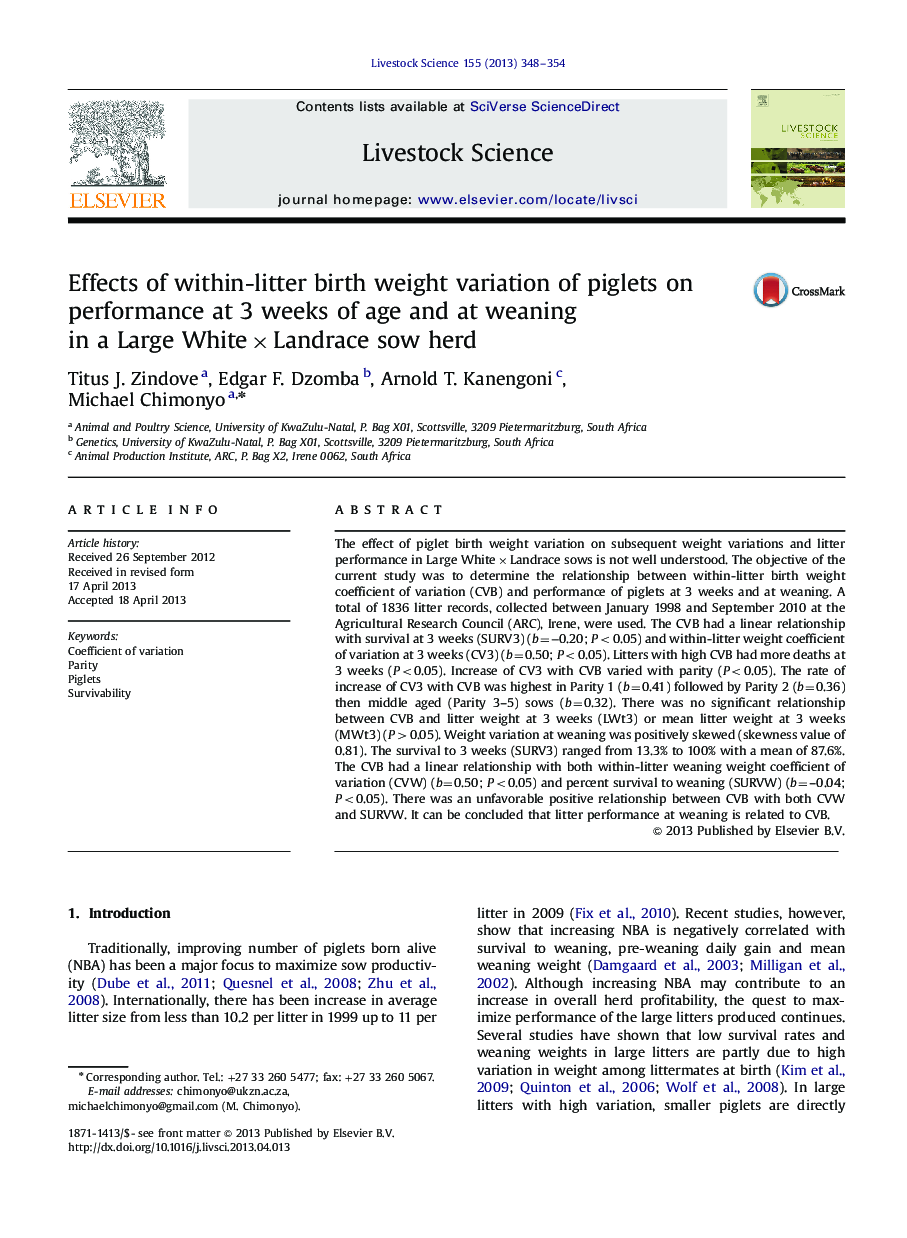| Article ID | Journal | Published Year | Pages | File Type |
|---|---|---|---|---|
| 5790271 | Livestock Science | 2013 | 7 Pages |
Abstract
The effect of piglet birth weight variation on subsequent weight variations and litter performance in Large WhiteÃLandrace sows is not well understood. The objective of the current study was to determine the relationship between within-litter birth weight coefficient of variation (CVB) and performance of piglets at 3 weeks and at weaning. A total of 1836 litter records, collected between January 1998 and September 2010 at the Agricultural Research Council (ARC), Irene, were used. The CVB had a linear relationship with survival at 3 weeks (SURV3) (b=â0.20; P<0.05) and within-litter weight coefficient of variation at 3 weeks (CV3) (b=0.50; P<0.05). Litters with high CVB had more deaths at 3 weeks (P<0.05). Increase of CV3 with CVB varied with parity (P<0.05). The rate of increase of CV3 with CVB was highest in Parity 1 (b=0.41) followed by Parity 2 (b=0.36) then middle aged (Parity 3-5) sows (b=0.32). There was no significant relationship between CVB and litter weight at 3 weeks (LWt3) or mean litter weight at 3 weeks (MWt3) (P>0.05). Weight variation at weaning was positively skewed (skewness value of 0.81). The survival to 3 weeks (SURV3) ranged from 13.3% to 100% with a mean of 87.6%. The CVB had a linear relationship with both within-litter weaning weight coefficient of variation (CVW) (b=0.50; P<0.05) and percent survival to weaning (SURVW) (b=-0.04; P<0.05). There was an unfavorable positive relationship between CVB with both CVW and SURVW. It can be concluded that litter performance at weaning is related to CVB.
Related Topics
Life Sciences
Agricultural and Biological Sciences
Animal Science and Zoology
Authors
Titus J. Zindove, Edgar F. Dzomba, Arnold T. Kanengoni, Michael Chimonyo,
